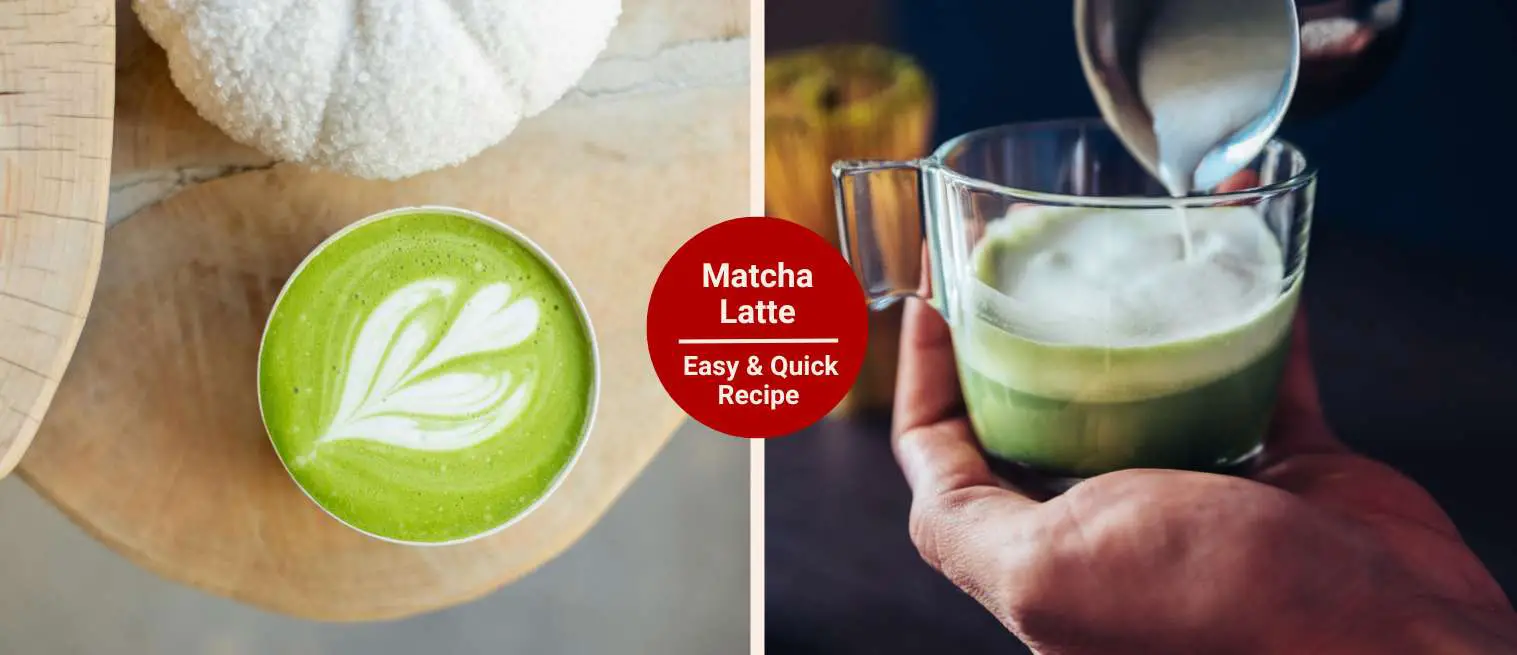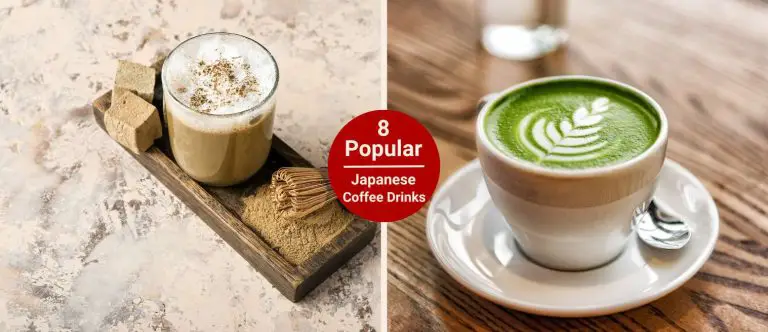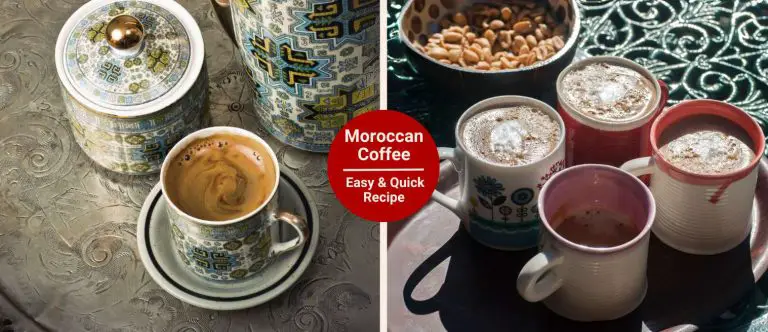How to Make a Matcha Latte (Quick & Easy Recipe)
So recently, I discovered matcha while watching a random YouTube video and let me tell you, it’s been crazy town ever since.
I’ve tried everything from dirty matcha with a double espresso kick to frosty iced versions with lavender syrup.
But today, let’s slow down and talk about the classic (can we even call it that?) matcha latte: smooth, earthy, and pretty easy once you get the hang of it.
In this guide, I’ll show you exactly how to make a matcha latte. You’ll learn what tools you need, how to get that silky froth, and a few personal tricks to level up your cup. So let’s start brewing!
What Is a Matcha Latte?
Matcha latte is a creamy drink made by whisking high-quality matcha green tea powder with hot water and blending it with warm or frothed milk.
Basically, it is the green tea version of your morning latte. However, it has a little more earthiness and a gorgeous, vivid color that looks good in your favorite mug.
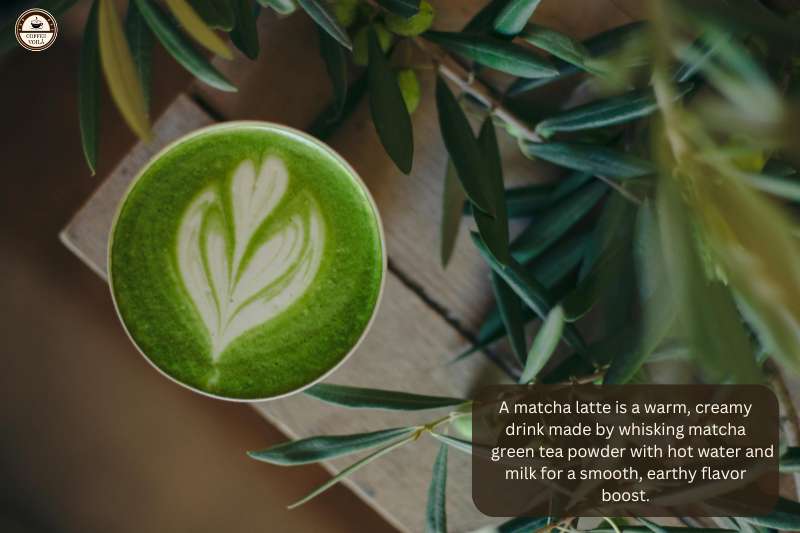
Now, matcha has this grassy, slightly sweet flavor that takes a sec to get used to. But once you’re in, you’re hooked. It’s not only tasty either; it’s packed with antioxidants and gives you this calm, focused kind of energy.
Origins & History
While it originally came from China, it truly flourished in Japan, especially after the 14th century when compressed tea was banned in China.
Japan turned it into an art form literally. The whole Japanese tea ceremony, or chanoyu, revolves around the preparation and sharing of matcha.
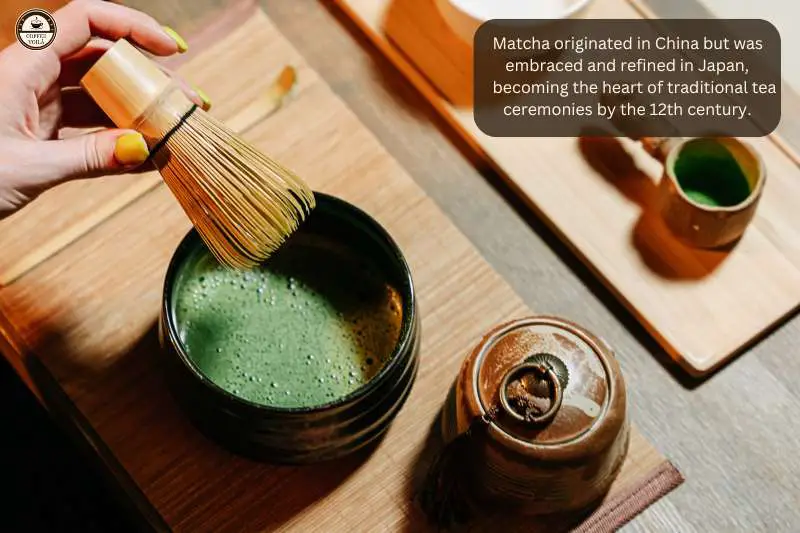
And get this, matcha is made from shade-grown tea leaves called tencha. This gives it that vibrant green color and rich umami flavor. The shade growing boosts chlorophyll and amino acids like L-theanine, which makes the taste smoother and fuller.
It’s not just about sipping either. In Japan, matcha became a meditative practice, something spiritual and refined.
But in everyday life now? It shows up in everything from wagashi (traditional sweets) to modern matcha lattes, cakes, and even Kit Kats.
Awesome Coffee Alternative…
What I love most about a matcha latte is how it fits right into your breakfast without the coffee crash. Thanks to the combo of caffeine and L-theanine, matcha gives you a smoother kick that lasts longer.
You don’t feel as much that spike-then-slump thing you sometimes get with espresso. I’ll still reach for a cappuccino or meia-de-leite now and then. But when I want something a little gentler on the stomach or need to avoid that third cup of coffee? Matcha latte, every time.
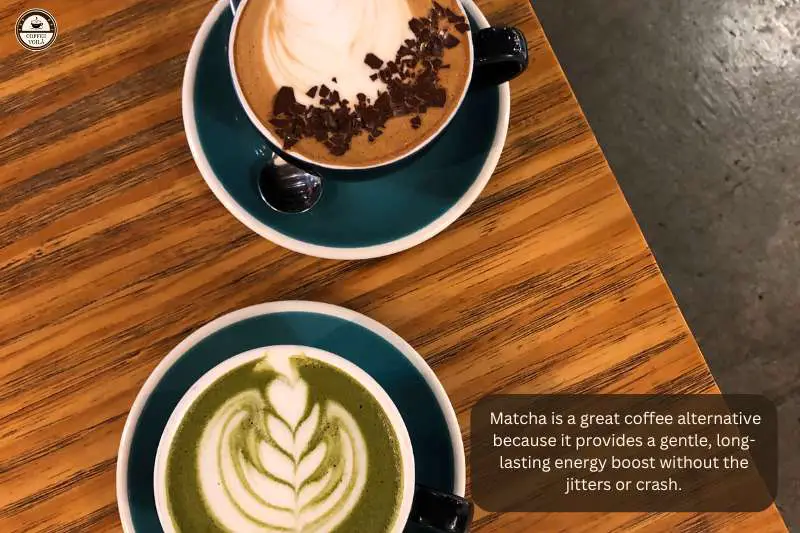
Plus, for anyone sensitive to acidity or looking to switch things up, matcha’s a solid swap. It tastes cleaner, and when paired with oat milk or almond milk, it’s this velvety, refreshing hug in a cup.
Notes: You can also drink matcha latte hot or iced (click here to read, Iced Matcha Latte), cozy and calming in winter, or refreshing and energizing on warmer days.
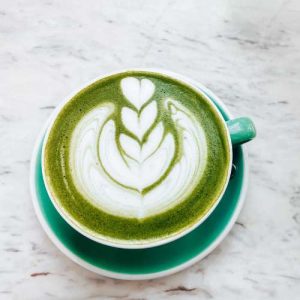
Matcha Latte (Quick & Easy Recipe)
Equipment
- A bamboo whisk (chasen) or a small kitchen whisk
- A small bowl or matcha bowl for whisking
- A milk frother or saucepan (plus some elbow grease if whisking by hand)
- Your favorite mug or a tall glass
Ingredients
- 1 tsp high-quality matcha powder (ceremonial for smoother flavor, culinary for budget-friendly blends)
- 6–8 oz milk of choice (I’m partial to oat or coconut for extra creaminess)
- 2–3 tbsp hot water (around 175°F or 80°C—don’t go boiling or it’ll taste bitter)
- Optional: sweeteners like honey, maple syrup, vanilla extract, or stevia
Instructions
- Step 1) Sift & Whisk the Matcha: Sift your matcha into the bowl using a fine mesh strainer. It takes 10 seconds but saves you from gritty lumps later on. Then pour in the hot water and whisk briskly in a zig-zag or “M” shape until it turns smooth and frothy.
- Step 2) Heat and Froth the Milk: Warm your milk gently on the stove or in the microwave just enough for steam to start rising, but not to form bubbles. Then froth it. A hand frother is the easiest route, but I’ve shaken hot milk in a mason jar (towel wrapped around it!) and it worked in a pinch.
- Step 3) Combine and Enjoy: Pour the matcha into your mug first. Slowly add the frothed milk to keep that lovely layer effect. Next, sweeten if needed. I usually go with a splash of vanilla and a drizzle of maple syrup for an extra touch.
Video
Notes
Pro Tip
If your matcha still tastes off, try switching your water. I didn’t realize how much tap water affected the flavor until I started using filtered water; it made a huge difference.Favorite Matcha Brands (Personal Recommendations)
There’s a lot of matcha out there. Some taste grassy and smooth, while others are bitter and weird. I’ve gone through my fair share, specifically the ones that say “ceremonial grade” but taste like straight spinach.
If you’re making matcha lattes at home, the quality of your matcha powder matters. So, here are three brands I actually recommend:
Ippodo Tea (Kyoto, Japan)
Ippodo’s ceremonial matcha has this rich umami taste with almost no bitterness, and it froths beautifully every time. The flavor is bold, earthy, and slightly sweet. You’ll find it perfect if you want to sip it straight or use it for a hot latte.
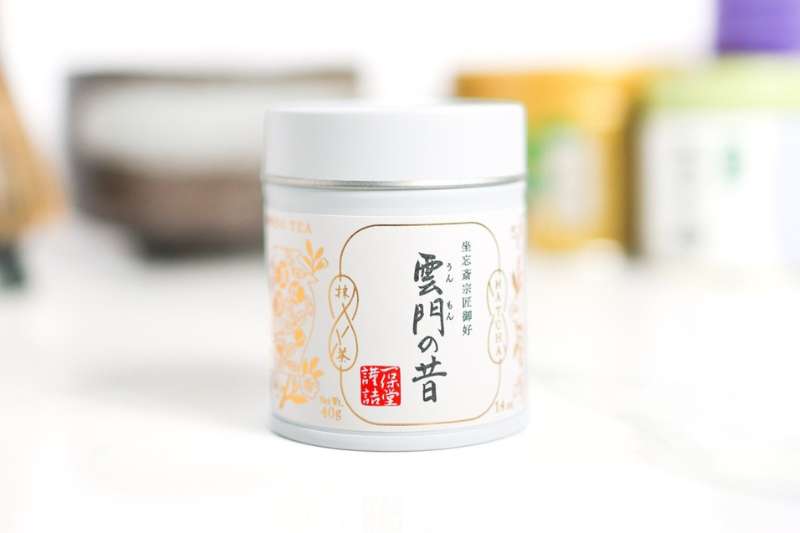
I usually go for their Ummon-no-mukashi or Horai-no-mukashi blends when I want to treat myself.
Although it’s not cheap, you’re paying for genuine quality straight from Kyoto. Definitely not the kind I’d toss into cookies or pancakes.
MatchaBar (Brooklyn, NY)
MatchaBar’s Classic and Ceremonial Grade powders are solid picks for everyday lattes. It’s got a smooth flavor with a hint of sweetness, and it blends easily, even without a fancy whisk. Plus, it’s accessible. Typically, you can find it online or even in some Whole Foods.
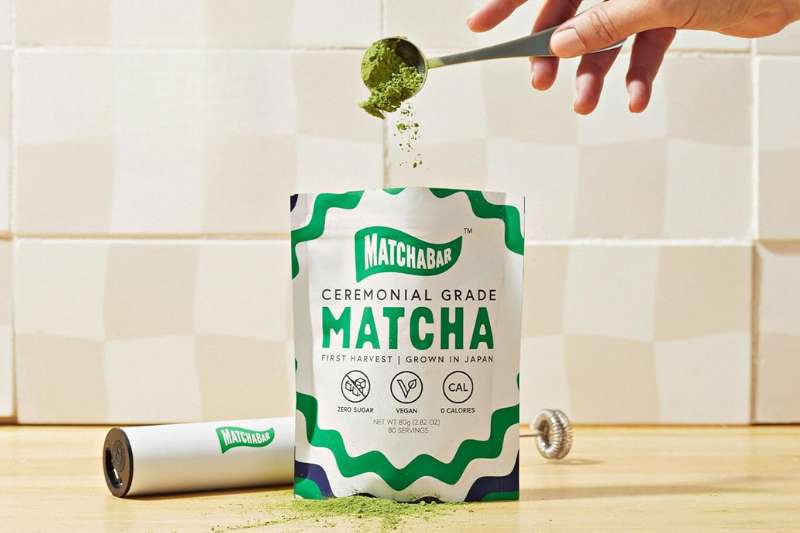
This is my favorite for iced matcha lattes because the color stays vibrant and the taste doesn’t get washed out when it hits the ice. Furthermore, they make matcha packets, which are great if you’re on the go or just don’t wanna measure anything.
Jade Leaf Matcha (USA – Sourced from Japan)
If you’re new to matcha and looking for a more budget-friendly option, Jade Leaf is a good starting point. Their Culinary Grade is pretty decent for baking and smoothies.
However, if you’re making lattes, go for the Ceremonial Grade. It’s got a mellow flavor, not too grassy, and mixes well whether you use a frother or not.
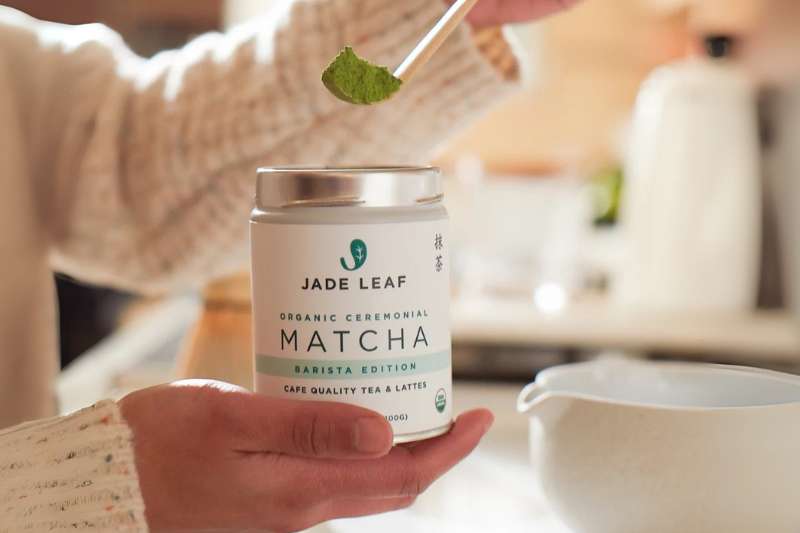
One thing I like? They’re really transparent about sourcing and quality. Plus, you can get it in big pouches, which saves some cash if you’re drinking matcha daily like I do.
Matcha Latte Flavor Variations
One of the best things about making matcha lattes at home? You get to play barista. Once you’ve nailed the basics, it’s super easy to get creative with flavor twists.
Vanilla Matcha Latte
I recommend this one if you’re into vanilla. Just add about ¼ teaspoon of vanilla extract to your matcha while whisking it with water. It rounds out the grassy notes and gives it that bakery-sweet edge without going overboard.

I commonly go with Nielsen-Massey vanilla: it’s rich, pure, and doesn’t have that fake aftertaste some cheaper extracts do.
Coconut Matcha Latte
Honestly, if you’ve never tried matcha with coconut milk, you’re missing out. The creaminess and subtle tropical vibe make this version perfect for warm weather.
Pro tip: Use full-fat canned coconut milk for a richer, more decadent drink.
Dirty Matcha Latte
Just pull a shot of espresso and pour it over your matcha base before adding milk. I like to stir gently so you get that slight marbling.
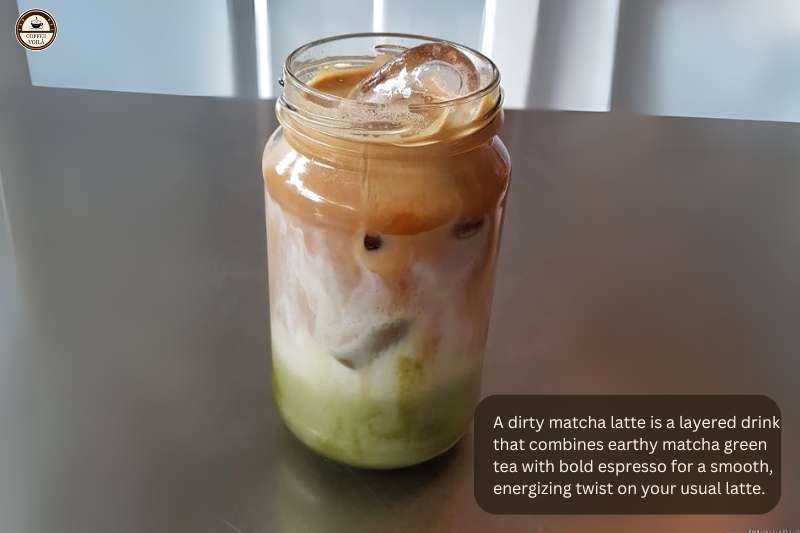
Do you want the full how-to? I’ve got a whole separate guide on making a killer Dirty Matcha Latte.
Flavored Syrups
You can sweeten things up with a splash of lavender syrup, honeycomb, or even maple. I once tried a rose syrup version on a whim and… it kinda worked.
When I’m adding syrup, I usually reach for Monin. Their flavors are clean, not overly sweet, and a little goes a long way.
Last Thoughts
Have you tried making your own matcha latte? Share your favorite twist or flavor add-in. I’m always looking for new combos, and I bet others are too. And with that… voilà.
Questions? We Have Answers.
Get answers to a list of the most Frequently Asked Questions.

